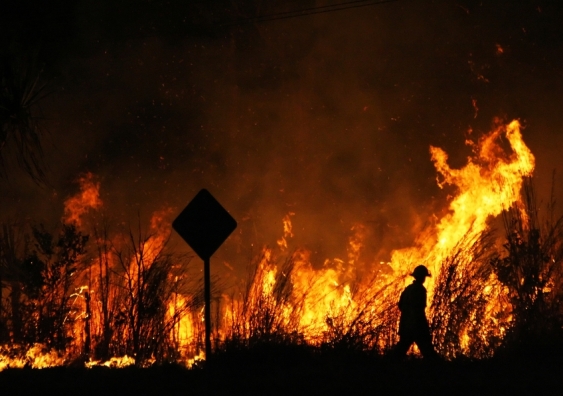Navigating Residential Property Safety And Security: Understanding the Importance of a BAL Report
Navigating Residential Property Safety And Security: Understanding the Importance of a BAL Report
Blog Article
How BAL Report Impacts Shrub Fire Protection Procedures
In the world of bush fire security, the Building Assault Degree (BAL) record stands as an important tool that dramatically influences the safety and resilience of buildings in fire-prone locations - BAL Report. The impact of a BAL evaluation expands far beyond simple documentation; it functions as the keystone for identifying the proper building and construction standards and fire defense steps needed to minimize the risks posed by bushfires. As communities grapple with significantly extreme fire seasons, comprehending exactly how the BAL record forms these protective procedures ends up being extremely important for house owners, building contractors, and policymakers alike
Understanding the Bushfire Attack Degree

Value of BAL Record Analysis

In Addition, the BAL record analysis functions as a foundational action in abiding by legal responsibilities and needs associated with bushfire protection. Regional councils and authorities often mandate the entry of a BAL record as component of the preparation and structure approval procedure to make certain that properties are effectively guarded versus bushfire risks. Failing to conduct a complete BAL record analysis can cause poor defense procedures, leaving residential properties vulnerable to ruining bushfire cases.
Building And Construction Requirements Based on BAL
A comprehensive understanding of the Bushfire Attack Level (BAL) allows residential or commercial property proprietors to carry out building criteria customized to their particular danger profile. Building and construction criteria based on BAL are vital in minimizing the effect of bushfires on properties. The BAL ranking categorizes the potential risk a residential property encounters throughout a bushfire on a scale from BAL-Low to BAL-FZ (Flame Zone) Each BAL degree corresponds to details construction requirements laid out in the Australian Typical AS3959-2018 Building of Buildings in Bushfire-Prone Areas. Properties categorized as BAL-Low might only call for fundamental measures such as getting rid of debris and preserving yards, while those in greater BAL groups need even more robust steps like cinder screens, fireproof materials, and sealed home windows. Complying with these building requirements not just boosts the architectural resilience of the property but also improves the general safety of locals during a bushfire occasion. For that reason, property owners should carefully consider their BAL ranking and follow the corresponding building criteria to sufficiently secure their homes and owners.
Carrying Out Fire Security Steps
With the structure of building and construction standards based on Bushfire Assault Degree (BAL) in area, the emphasis currently shifts in the direction of the practical application of fire security steps to fortify residential properties versus bushfire hazards. Passive procedures include making click to find out more use of fire-resistant structure materials, setting up ember guards on vents, securing voids in wall surfaces and roofing systems, and keeping a clear space around the property free from combustible plant life. By integrating both passive and energetic techniques, buildings can substantially decrease their vulnerability to bushfire events and increase the safety of occupants.
Shielding Houses Against Bushfires
Successfully protecting homes versus the harmful impacts of bushfires calls for a detailed and proactive technique to fire defense procedures. Property owners staying in bushfire-prone locations should focus on the implementation of numerous strategies to improve their building's durability versus wildfires. One fundamental facet is creating a defensible space around the home by keeping a clear zone devoid of flammable products. This consists of on a regular basis trimming plant life, removing dead plants, and making certain a safe range between structures and trees. Installing fire-resistant roofing materials can additionally considerably minimize the danger of ash assaults and straight fire contact. In addition, securing gaps and vents to avoid coal breach, in addition to incorporating fire-resistant windows and doors, can aid fortify the home's defense versus bushfires. Buying a trustworthy water resource, such as a well-maintained sprinkler system or a specialized water container, is essential for providing water during fire emergency situations - BAL Report. By welcoming a proactive stance and integrating these safety straight from the source steps, homeowners can dramatically increase their chances of safeguarding their homes against bushfires. hop over to here
Verdict
In verdict, the Bushfire Assault Degree (BAL) report plays a vital role in figuring out the essential security procedures versus bushfires. Implementing fire security actions based on the BAL report is crucial in safeguarding residential or commercial properties from prospective bushfire hazards.
In assessing bushfire danger to properties, understanding the Bushfire Assault Level (BAL) is an essential part for carrying out reliable security measures. On the whole, a clear understanding of the Bushfire Strike Level is crucial for implementing sufficient security measures and reducing the effect of bushfires on properties.

Report this page